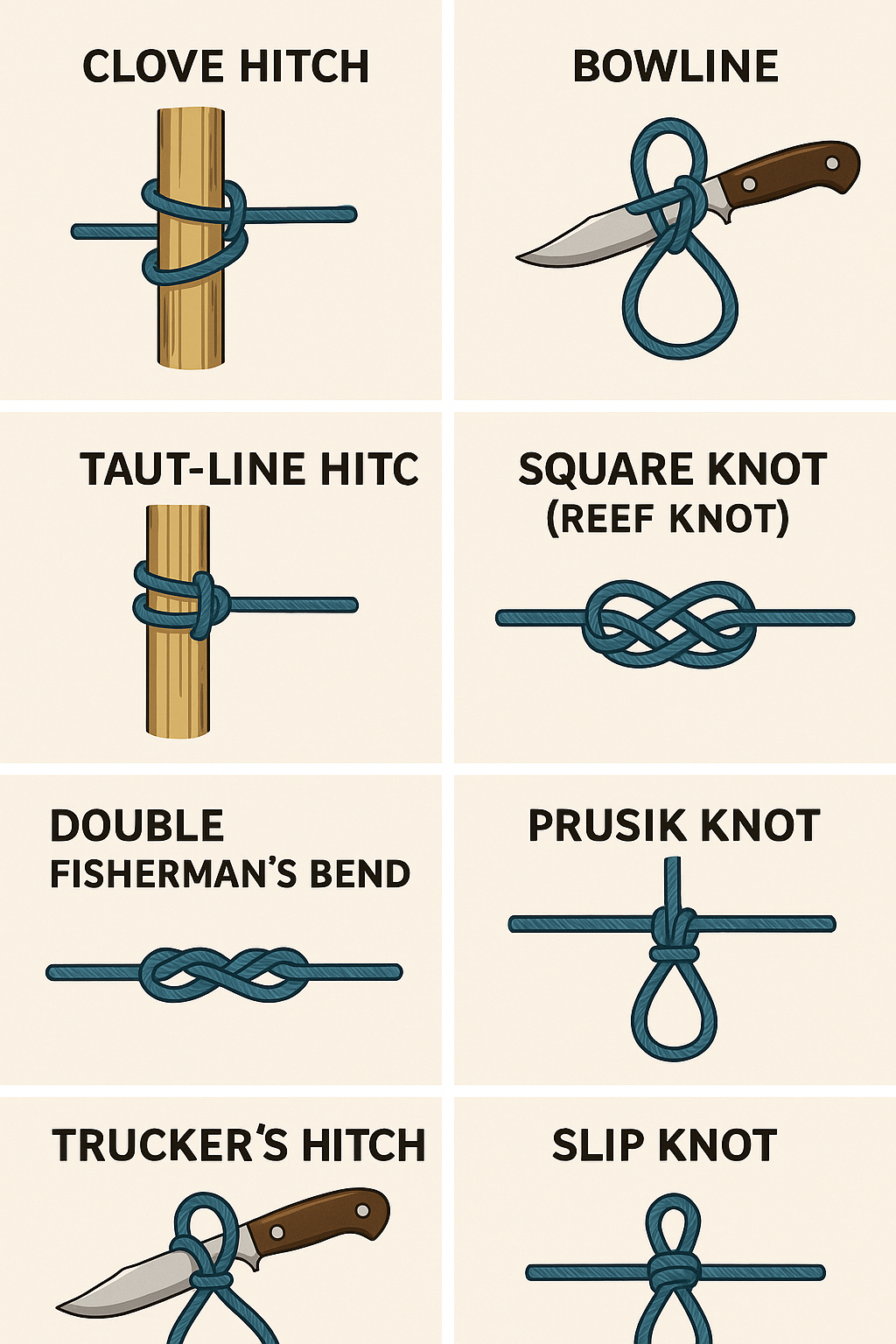Whether you’re deep in the backcountry or setting up a quick blind near your truck, knowing the right knot can save time, secure your gear, and even keep you safe. Here are 8 practical knots every hunter should master before heading out into the field.
1. Clove Hitch
Use: Quick and adjustable way to tie a rope to a post, tree, or pole.
Why Hunters Use It: The clove hitch is a go-to knot for setting up camp. It’s perfect for tying tarps or tents to nearby trees, and it holds well under light to moderate tension. You can also use it to temporarily tie your gear or game to a tree while processing or packing out.
2. Bowline
Use: Creates a fixed loop that won’t slip or tighten under load.
Why Hunters Use It: Need to hoist your rifle or pack up into a tree stand? The bowline makes a secure loop that won’t collapse. It’s also great for dragging out a deer, tying down gear, or even crafting an emergency harness in survival situations.
3. Taut-Line Hitch
Use: Adjustable loop that stays put under tension.
Why Hunters Use It: When setting up a tent or tarp in uneven terrain, this knot lets you tighten or loosen guy lines without untying. It’s ideal for clotheslines, meat drying lines, or any situation where you want adjustable tension in the field.
Taut-Line Hitch or Midshipmans’s Hitch
4. Square Knot (Reef Knot)
Use: Joins two ropes of the same size.
Why Hunters Use It: Keep this knot in your toolkit for tying up bundles of firewood, gear, or even securing bandages. It’s quick and easy to tie, though best used for non-critical loads.
5. Double Fisherman’s Bend
Use: Strong knot for permanently tying two ropes together.
Why Hunters Use It: This is the knot you want for serious load-bearing situations. Use it to join ropes when dragging large game or to create secure loops in climbing or prusik cords for treestand climbing systems.
6. Prusik Knot
Use: A sliding friction knot tied on another rope.
Why Hunters Use It: Treestand hunters and climbers take note: the prusik acts as a backup or ascending knot when used with a climbing rope. It grips tight under weight but can slide when unloaded — a critical knot for safety in vertical systems.
7. Trucker’s Hitch
Use: Creates a pulley system for cinching loads tight.
Why Hunters Use It: Need to strap down a tarp or a deer on an ATV? The trucker’s hitch gives you mechanical advantage to tighten ropes extremely securely. Great for tarps, blinds, trailers, and more.
8. Slip Knot
Use: Quick-release loop that tightens under load.
Why Hunters Use It: Ideal for tying gear quickly or making temporary tethers for dogs. It’s also useful for primitive snaring (where legal) or other survival situations where a fast-release, tightening knot is required.
All knot demonstrations animations come from www.animatedknots.com.
Final Thoughts
Learning these 8 knots isn’t just a survival skill — it’s a game-changer for serious hunters. From securing camp to handling big game in the field, having the right knot ready can make your hunt smoother, safer, and more successful.
Practice at home and you’ll be ready in the woods when it counts.
